Philips Series 3000 AC3821 Air Purifer detailed review
Philips has a range of air purifiers that it offers across varying price segments. We have the Philips Series 3000 AC3821/20 air purifier in for review that features a Rs 37,995 price tag on the company’s official site but retails for around Rs 22,999 on Amazon. We tested the device during the Diwali season, when the air quality was extremely degraded and continued long term testing into the summers. Will the air purifier be able to combat the highly toxic air or will it give up in these tough conditions? We find out.
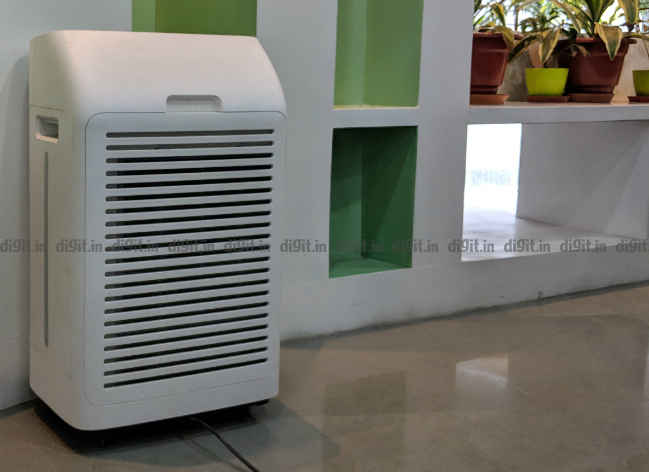
Build and Design
We rarely come across any air purifier designed for Indian homes that doesn’t feature a sturdy build and a functional design. The Philips AC3821/20 is no exception. It sports a rugged build with an aesthetically pleasing design, even though it resembles most box-type air purifiers. It sports rounded corners and comes equipped with wheels that help move it around effortlessly. The device sucks in air from the rear via horizontally running slits and there’s a latch on its right side, which is actually a panel to fill water in case one needs to use the humidification feature.
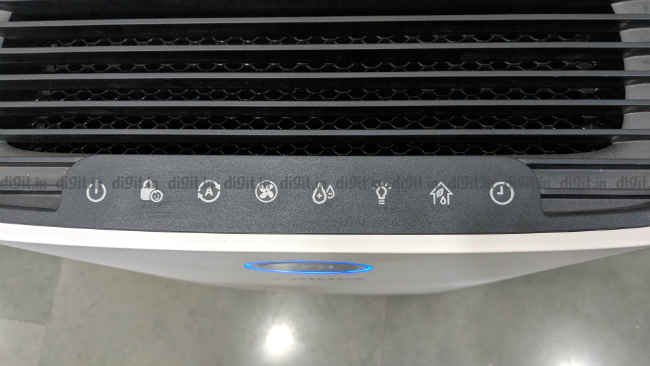
The Philips AC3821/20 vents out purified air from the top. A panel on the top features touch-based controls to operate the air purifier and there’s also a small display on the front. This display shows off various metrics pertaining to the air quality inside a room, such as the current PM2.5 levels, which it measures with the help of its sensors on the left side. The display also enables users to figure out what conditions the air purifier is being operated at like if the humidification feature is enabled, or whether the filter needs to be replaced.
Filters
The Philips AC3821/20 air purifier comes equipped with three separate filters that enable it to remove particulates and gases. It sports a pre-filter, which is followed by an active carbon filter and a ‘Nano Protect’ filter, which is a term coined by Philips to describe a HEPA filter that traps PM2.5 and smaller particulates. The pre-filter works by capturing bigger entities, which are mostly PM10 and larger particles. Hair strands, pet dander and bigger dust particles fall under this category. We noticed that after using the air purifier for a couple of weeks, the pre-filter had gathered a large amount of dust, indicating that it was working rather well. Similarly, the HEPA filter turned greyish due to the accumulation of trapped particulate matter.
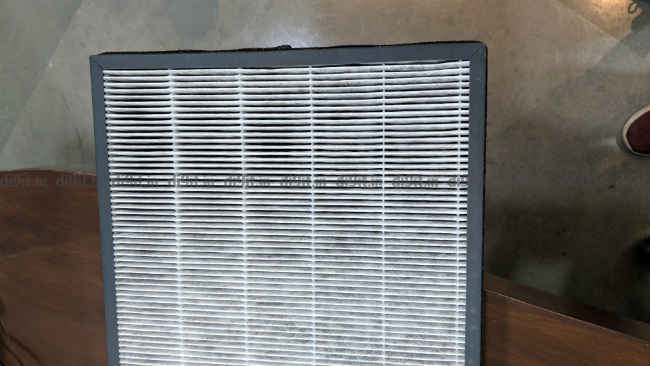
Next up are the active carbon and the ‘Nano Protect’ HEPA filter that work in tandem to rid the air of smaller particulates and glasses. The carbon filter features a honeycomb structure and contains activated carbon, which absorbs harmful gases like benzene and formaldehyde that are usually produced indoors during the cooking process. As for the HEPA filter, the pleated design enables trapping of particles that are up to 0.3µm in size. On top of that, both the filters are said to last for about 24 months but that can change depending on the pollution of the area where one uses the air purifier.
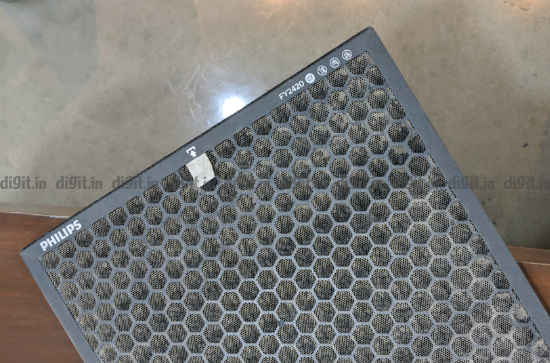
Performance
Most air purifiers follow the same simple rule of sucking in air from an inlet, filtering it in the process and releasing purified air from an outlet vent. The efficiency of the air purifier depends of a lot of other factors like how well it is able to circulate the air in a room if there are any gaps or leaks from where non-filtered air is passing around the filters and more. How powerful the filters are when it comes to trapping harmful particulates in the air also affects an air purifier’s ability to clean the air.
We tested the Philips AC3821/20 air purifier in such a manner that gives an accurate idea of how well it performs. Our standard test comprises of running an air purifier in three different areas that have dissimilar air quality levels. Room 1 is an area with considerably degraded air quality as it is situated in Delhi where external air pollution levels are quite high. This room has an area of 120 sq ft with a ceiling height of 12 ft. On the other hand, Room 2 features air quality level ranging between poor and moderate. Its ceiling height and area are 12 ft and 140 sq ft respectively. Finally, Room 3 is situated in a relatively cleaner area with a lower amount of airborne particulates. Its ceiling height is 12 ft and it has an area of 350 sq ft. Additionally, the Philips air purifier displays the current PM2.5 levels but we used our own air quality monitor ascertain how well the device performs. Do note that we recorded the concentration and not weight of PM2.5, PM10 pollutants, and these are mentioned in µg/m3.
In room 1, the PM2.5 and PM10 levels were 92 and 112 µg/m3 respectively before we commenced our standard 45 minutes of testing. Do note that the National Ambient Air Quality Standards have set permissible PM2.5 and PM 10 levels at 60 µg/m3 and 100 µg/m3 (over 24 hours). A healthy individual, when exposed to pollutant levels over the above-stated levels, can develop health complications, over a period of time. Living in an area with high pollution levels, one could develop allergies or even be under a high risk of developing lung and/or coronary complications due to high levels of air pollutants.
Coming back to the tests, we let the air purifier run on its max speed setting for 45 minutes. We observed that after the test, it brought down PM2.5 levels to 24 and PM10 to 21. The overall AQI (calculated based on PM2.5 particles) was also lowered from 169 to 76, which falls in the moderate range on the AQI index. While not marvellous, the air purifier did perform well enough to make the air better.
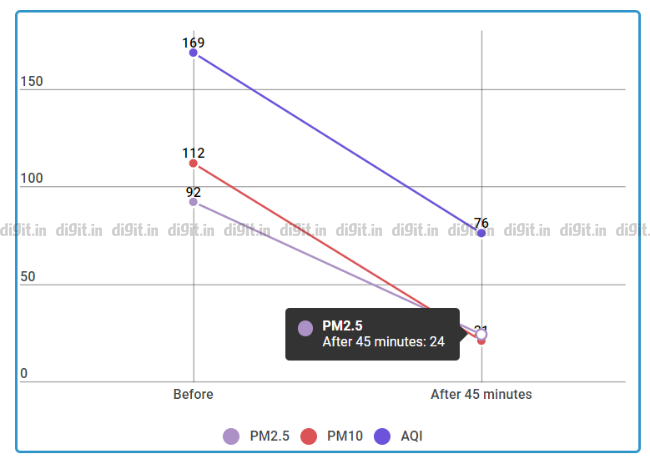
In room 2, the air purifier started out by trying to filter out PM2.5 and PM10 levels that stood at 50 and 58 respectively. While the pollution level wasn’t really too high, an air purifier is still tested in these conditions since it is difficult to already lower reduced pollutant levels. After our standard 45 minute runtime, the PM2.5 and PM10 levels were both down to 10 and AQI improved from 136 to 42.
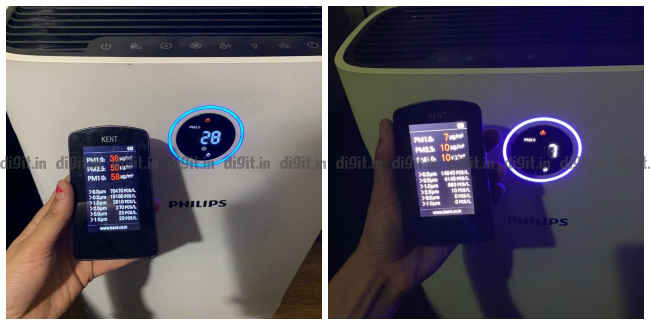
In this case, the Philips AC3821/20 did a good job and excelled in terms of efficiency.
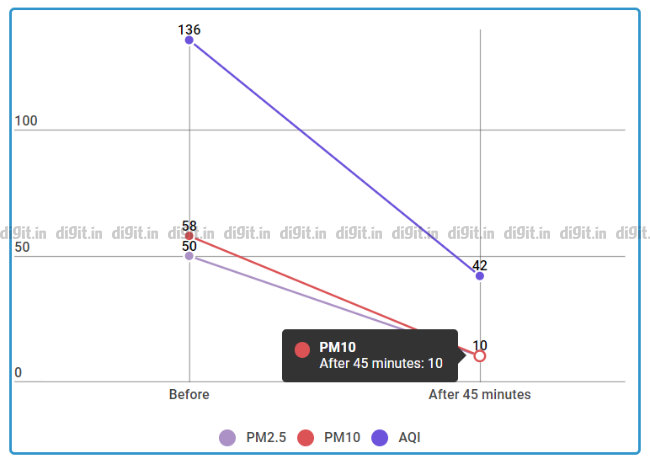
Coming to the room 3, which is one of the conference rooms in our office, PM2.5 levels were at 72 and PM10 at 83 respectively the AQI was at 159. After 45 minutes, the levels PM2.5 and PM10 dropped down to 25 and 32 respectively, while the AQI improved to 78. In this scenario, the air purifier performed well enough to get the pollution level under control.
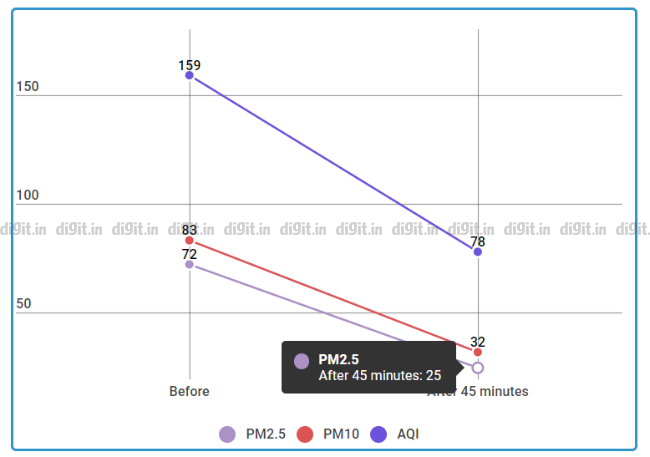
Humidification
While an air purifier’s primary function is to capture harmful particulates in the air, many companies integrate additional features to make the device an enticing buy for consumers. The Philips Series 3000 AC3821/20 air purifier comes equipped with a humidification feature that enables one to increase the moisture in their room while getting the air purified. Humidification comes in handy during the winter season and to help alleviate issues like dry skin or throat, cracked lips. Humidification is also beneficial when one is suffering from a flu or cold but do note that over humidifying air can cause some problems too.
While the Philips AC3821/20 air purifier comes equipped with a humidifier, the company already offers standalone devices for humidification. All of the company’s products, including the purifier being tested, feature NanoCloud technology. This tech is said to enable the company’s device humidify air using small water molecules that are proven to reduce the amount of bacteria in the air and not cause white spots or wet floor, which are some common problems when using an air humidifier.
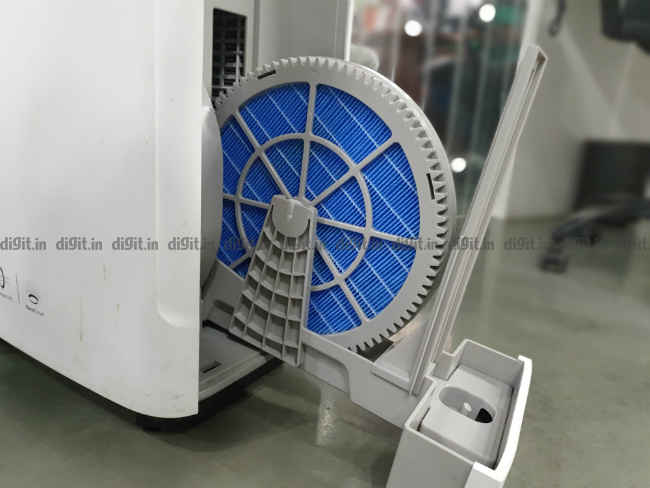
The most common problem while using a humidifier is that a fine mist of water is released in the air, settles down around your house and evaporates to leave white spots. This is a common occurrence that can be avoided by using filtered water in the humidification process. Philips also advises people to not use tap water for humidification. We observed that the humidification process on the Philips air purifier works well and as advertised, doesn’t cause white spots.
One should be mindful of the humidification setting being used. Crank it to the max and the room where humidification is happening will warm up by a considerable degree, even during winter. This doesn’t actually happen because of the device, but due to the fact that air retains warmth better when the humidity levels are high. Overall, the Philips AC3821/20 air purifier has powerful humidification capabilities that make a good product for your home when paired with good air purification capabilities.
Controls
Most appliances are becoming smarter these days with Internet of Things (IoT) capabilities. However, Philips chose to go traditional with its AC3821/20 air purifier as it doesn’t feature IoT support or app compatibility. The device’s touch-controls are placed beside the air outlet vent on its top edge. There’s a standard on/off switch, a child lock that disables all other buttons, air purification speed control, sleep timer, auto mode, a switch to dim the display, one to set the humidity level and one to change its operation modes.
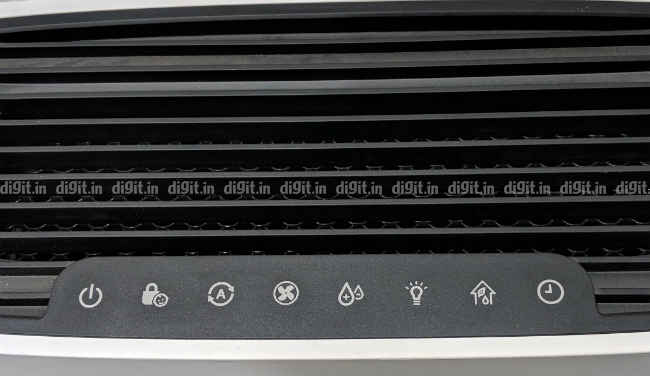
Most of the controls are self-explanatory. However, in the auto mode, the device detects the amount of pollution in the air and changes its speed dynamically to purify the air. Additionally, the device features three auto modes that it operates on. First one is a general mode, second is an extra-sensitive allergen mode and the third one is the sleep mode. As for selecting the humidity levels, the device offers four pre-set levels between 40, 50 and 60 percent to select from.
Bottomline
The Philips AC3821/20 is a good air purifier that works well when it comes to lowering harmful particulates from the air. However, it falls short on the features that it offers as compared to its rivals. At this price range, or even lower, you can find devices that offer more functionality with similar air purification. The plus point of the Philips air purifier is that it offers powerful humidification that can come in handy, but only during certain months. While the air purifier works well, we think there are better alternatives available like the Blueair Classic 280i, which is similarly powerful when it comes to cleaning air and offers IoT features. The tradeoff in most cases will be the humidifier one gets with the Philips air purifier.
[ad_2]
Source link

Post a Comment